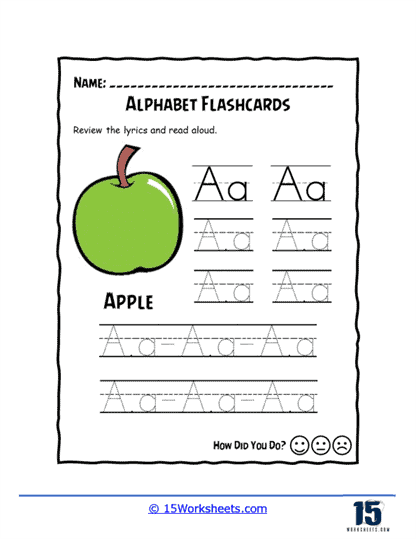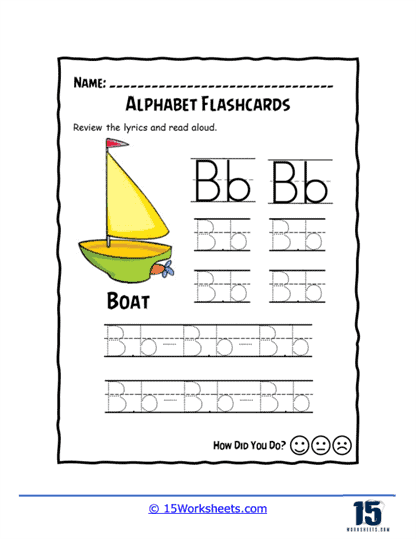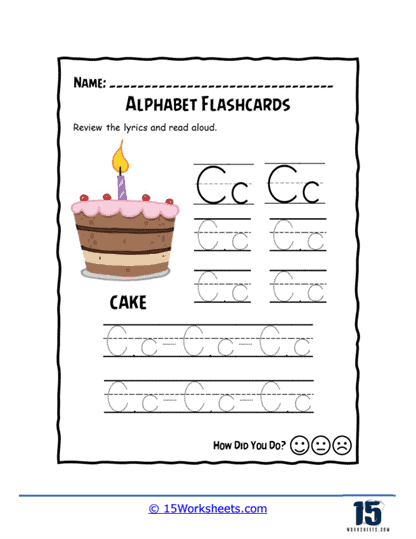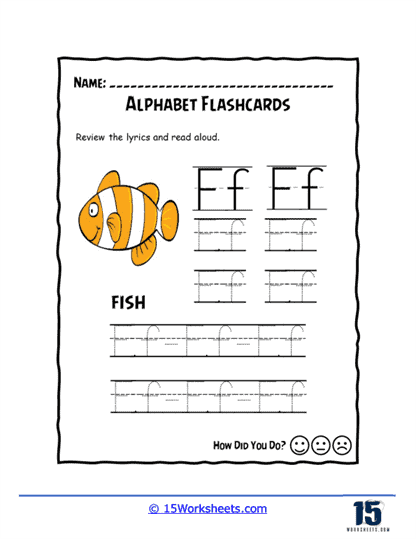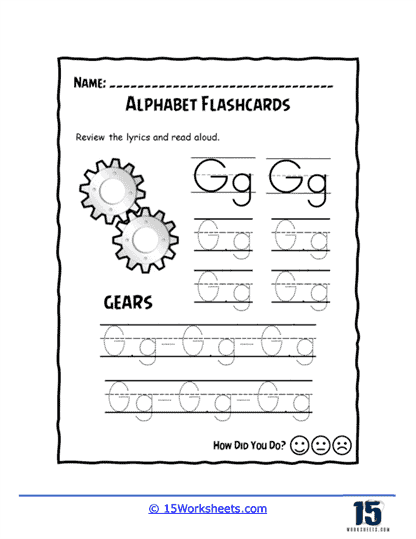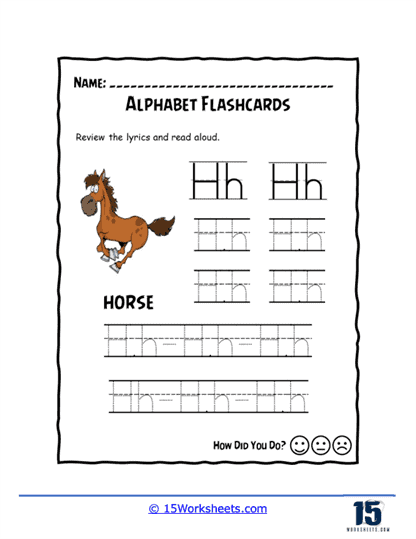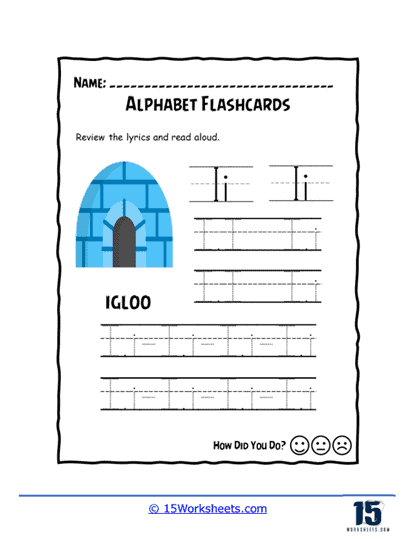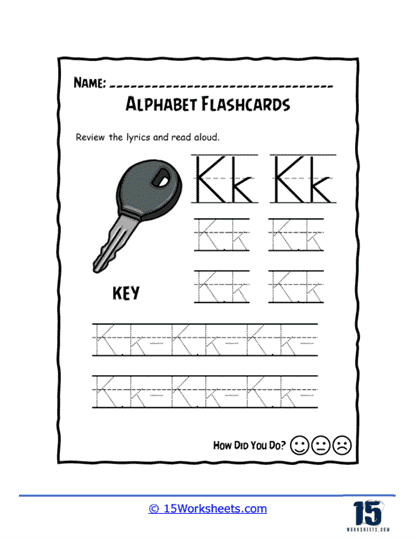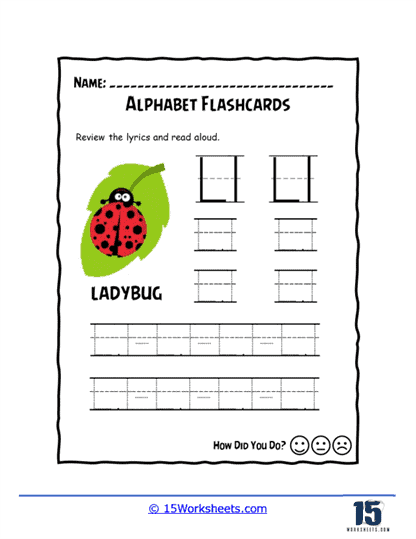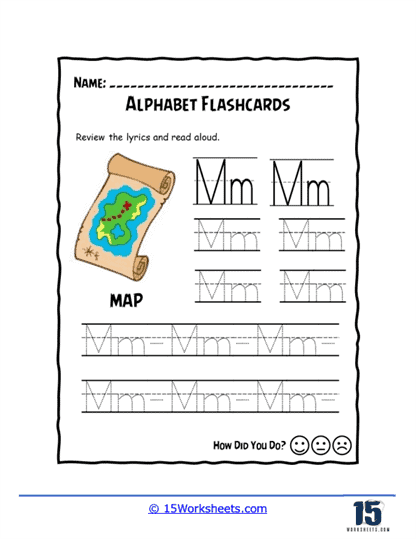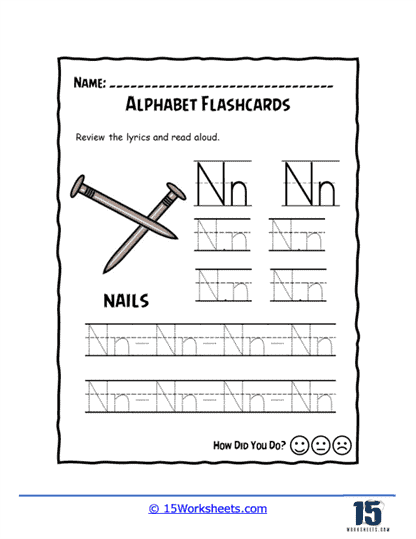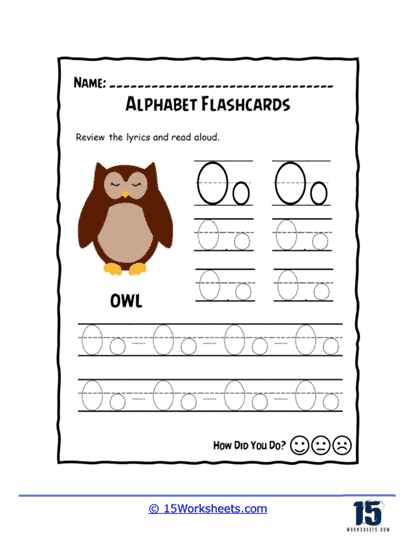Alphabet Flashcards Worksheets
About These 15 Worksheets
Alphabet flashcards worksheets will help children learn and practice the alphabet, including letter recognition, letter formation, and basic phonics skills. These worksheets feature flashcards that display individual letters of the alphabet along with corresponding images, words, or sounds. They are a useful tool for teaching the alphabet to young children or those learning English as a second language.
Alphabet flashcards worksheets can come in various formats, such as:
Letter Recognition – Flashcards may display individual letters, and children need to identify and say the letter aloud.
Letter Formation – Flashcards could display letters with directional arrows, and children need to trace the letters to practice letter formation.
Phonics and Letter Sounds – Flashcards may feature a picture or word that corresponds to the letter sound, and children need to identify the letter sound aloud.
Matching and Sorting – Flashcards could feature uppercase and lowercase letters, and children need to match the uppercase and lowercase letters or sort letters by specific criteria, such as by color or by letter formation.
Alphabet flashcards worksheets offer several benefits for children:
Letter Recognition – Learning the alphabet helps children recognize and identify letters, which is essential for reading and writing.
Phonics – Practicing letter sounds and phonics activities helps children develop basic reading skills, including phonemic awareness and decoding.
Vocabulary Development – Alphabet flashcards that incorporate pictures or words can help expand children’s vocabulary and improve their language skills.
Memory Skills – Flashcards can help children develop memory skills by memorizing and recalling letters and their corresponding sounds.
Foundation for Learning – Practicing alphabet flashcards is essential for building a strong foundation in literacy skills, which are crucial for children’s success in various academic subjects.
Alphabet flashcards are commonly used in early childhood education settings, including preschool, kindergarten, and homeschooling environments. They provide a hands-on and visual way to introduce and reinforce the letters of the alphabet, helping children develop important foundational skills for reading and writing.
How Do You Use Alphabet Flashcards With Students?
Alphabet flashcards are a versatile and effective tool for teaching students the letters of the alphabet and are commonly used in both classroom settings and at home. They can be used to introduce new letters, reinforce previously learned letters, and help students associate letters with sounds and words. Here’s how you can use alphabet flashcards in detail:
Introduction to Letters
Begin by introducing the alphabet flashcards in a way that captures the students’ attention. Hold up a flashcard with the letter ‘A’ and say the letter out loud. Ask the students to repeat after you. Show the card to the entire class and then go around the room, giving each child a chance to say the letter aloud. For young or beginning learners, introduce a few letters at a time, rather than the whole alphabet, to prevent overwhelming them.
Letter Recognition
Once you’ve introduced a letter, use the flashcards to reinforce recognition. Present a flashcard and ask students to identify the letter. To make this more engaging, you can turn it into a game by timing how fast they can recognize each letter or by mixing up the order of the flashcards to keep them on their toes.
Phonetic Sounds
After students are familiar with the letter shapes, start focusing on phonetic sounds. Show a flashcard and ask students to make the sound that the letter represents. For example, for the letter ‘B’, students would say /b/ as in “ball”. You can then show them the flashcard with the image of a ball to reinforce the sound association. Encourage them to think of other words that start with the same sound.
Word Association
Use the flashcards to teach students words associated with each letter. Hold up the ‘D’ card with a picture of a dog and say “D is for Dog”. Ask the students to repeat the phrase. Then, prompt them to come up with other words that start with ‘D’. This helps students make connections between letters and the words they begin, which is important for vocabulary development and early reading skills.
Writing Practice
Incorporate writing practice by using flashcards that have traceable letters. Give each student a flashcard and ask them to trace the letter with their finger first. After finger tracing, they can use a pencil to trace and then practice writing the letter on their own. This helps improve fine motor skills and letter formation.
Sequencing the Alphabet
Once students are more confident, use the flashcards to teach the sequence of the alphabet. Lay out the cards on the floor or a table, and ask students to put them in order from ‘A’ to ‘Z’. You can also hold up two cards and ask which one comes first in the alphabet.
Letter Matching Games
Create matching games where students match lowercase letters to their uppercase counterparts. You can lay out all the uppercase letters on one side and the lowercase on the other and have students draw lines to connect matching letters, or you can have them physically place the matching lowercase card on top of the uppercase card.
Assessments
Use flashcards to assess students’ understanding. Hold up a card and ask students to name the letter, its sound, and a word that starts with that letter. Make a note of which letters each student struggles with, so you know which ones to focus on in future lessons.
Interactive Activities
Make learning interactive by incorporating movement. Spread flashcards on the floor and play a game where you call out a letter or sound, and students jump to the correct card. You can also play a variation of musical chairs where students walk around a circle of chairs, each marked with a letter, and when the music stops, they must find the chair with the correct letter you call out.
Using flashcards regularly and incorporating a variety of activities helps keep the learning process fresh and engaging. Regular review with flashcards helps to reinforce learning and aids in long-term retention of the alphabet.

